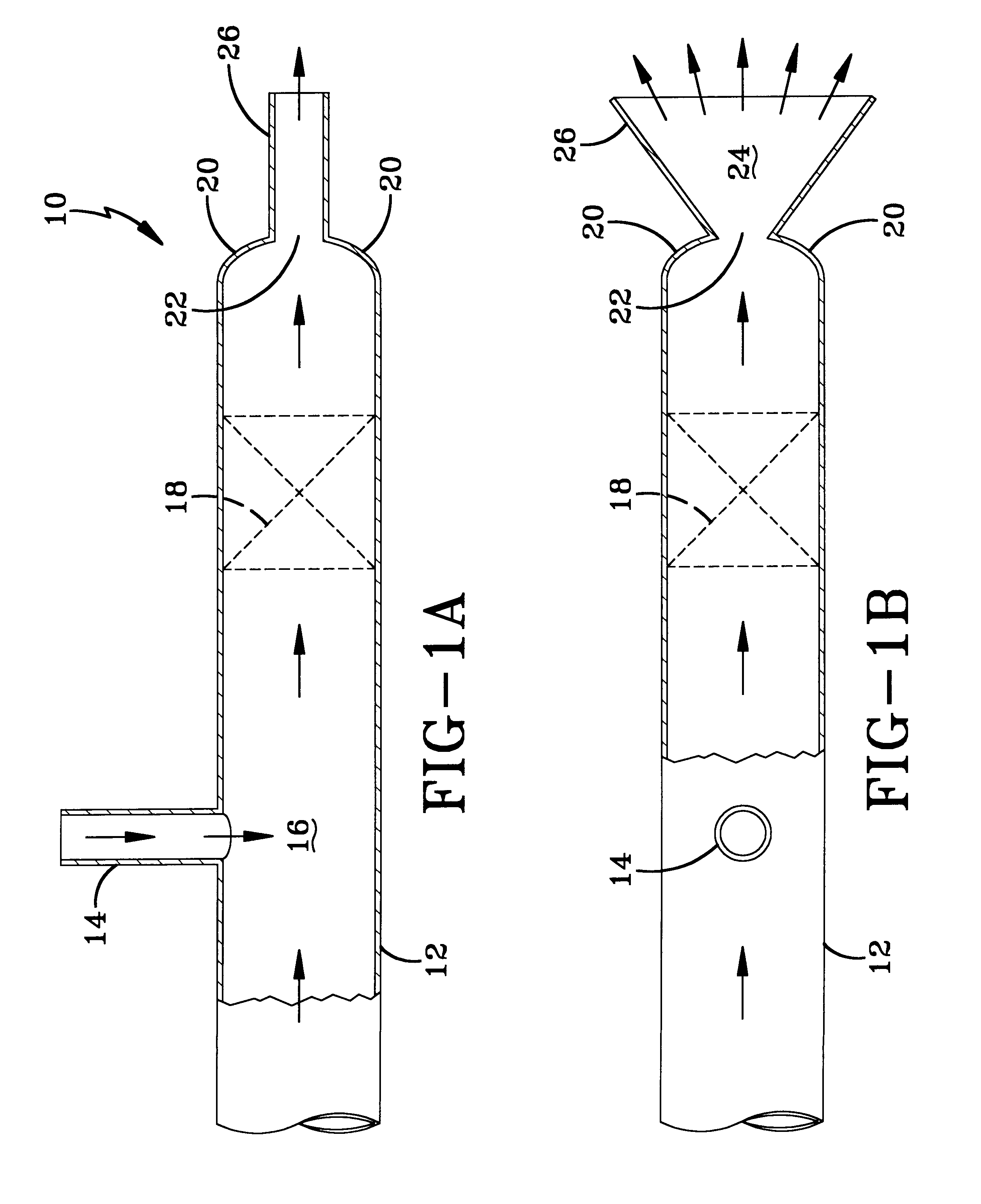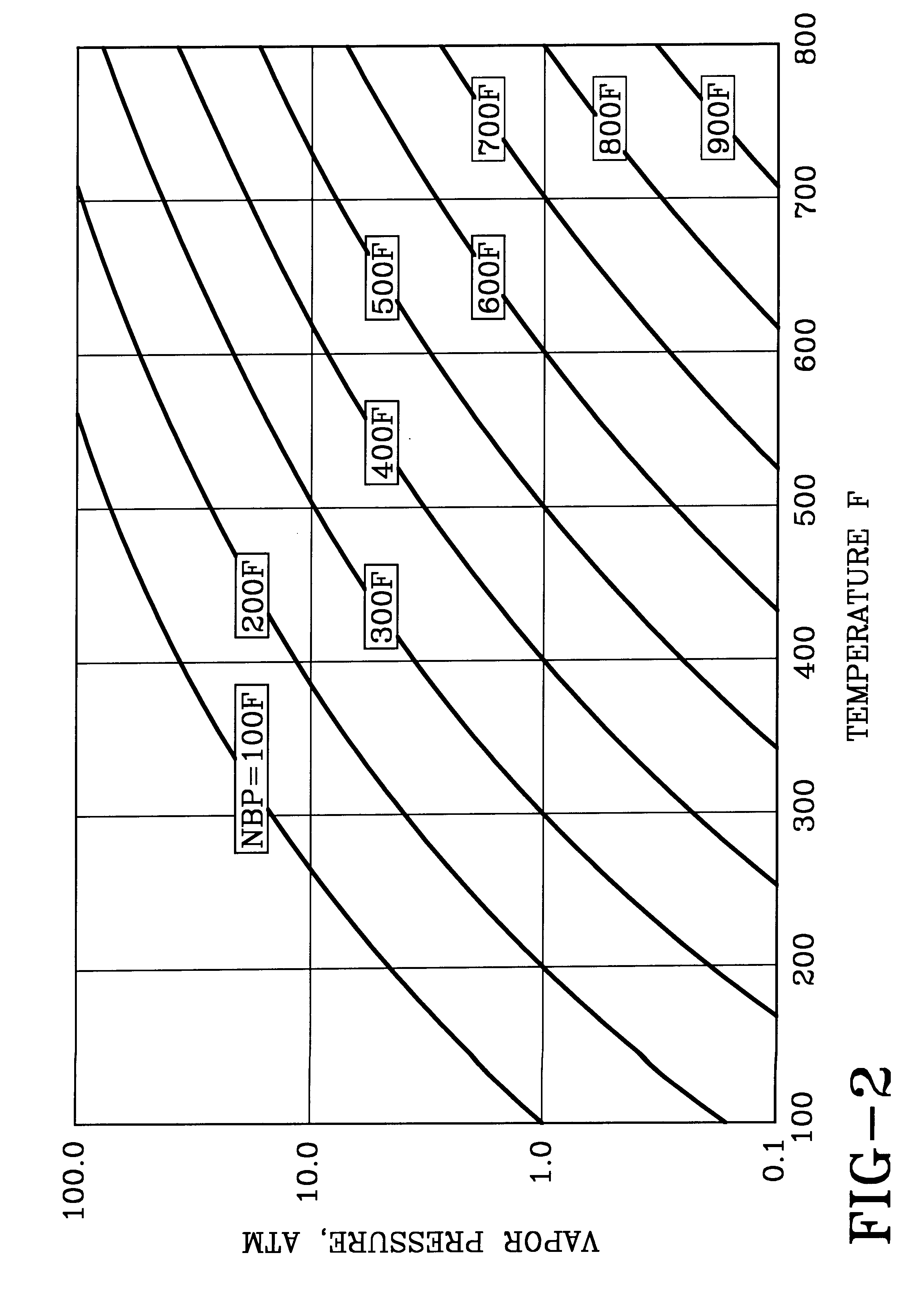Cavitation enhanced liquid atomization
a liquid atomization and cavitation technology, applied in the direction of catalytic naphtha reforming, thermal non-catalytic cracking, chemical/physical/physicochemical processes, etc., can solve the problem of fluid cat cracking as it is also called, viscous fluids at high flow rates, and enhanced corrosion
- Summary
- Abstract
- Description
- Claims
- Application Information
AI Technical Summary
Problems solved by technology
Method used
Image
Examples
example 1
The lower boiling cavitating fluid must be soluble in, and compatible with, the liquid to be atomized and with any upstream processes conditions for each specific application. By way of an illustrative example specifically for the practice of the invention for atomizing the liquid oil feed to an FCC unit, reference is made to a vapor pressure graph for hydrocarbons, shown in FIG. 2. For the purposes of this example, this graph is a simplified version of the one disclosed by Maxwell and Bonnell, in an article titled Derivation and Precision of a New Vapor Pressure Correlation for Petroleum Hydrocarbons, which appeared in Industrial and Engineering Chemistry, v.49, pages 1187-1196 (1957). The pressure in the fluid conduit upstream of the atomizing orifice is assumed to be 7 atmospheres and the pressure on the downstream side of the orifice, in the atomization zone, is assumed to be 3 atmospheres. For an upstream temperature of 750-800.degree. F., the cavitating liquid must be a liquid...
example 2
Simple comparative experiments using an aqueous acetone solution were conducted to demonstrate cavitation-enhanced atomization. Sharp angle orifice plates were used for the atomizing means, which in these experiments were bores in the plates and their length to diameter (L / D) ratios were 1.4:1 and 7:1. Both were cylindrical bores having an inner diameter of 350 .mu.m, with the plate thickness determining the L / D ratio. The main components of the experimental setup were a pressure vessel, a heated liquid hose, a monosize drop generator, and a heated air chamber purged with flowing nitrogen at atmospheric pressure. The atomizing pressure was measured in the pressure vessel. Images of the break-up of the fluid exiting each orifice and spray patterns were taken with a Greenfield Speedview 700 imaging system. Droplet images of the sprays were taken with a CCD camera. In every case, the orifice opened into the heated air chamber at the downstream side. The temperature in the chamber was i...
PUM
 Login to View More
Login to View More Abstract
Description
Claims
Application Information
 Login to View More
Login to View More - R&D
- Intellectual Property
- Life Sciences
- Materials
- Tech Scout
- Unparalleled Data Quality
- Higher Quality Content
- 60% Fewer Hallucinations
Browse by: Latest US Patents, China's latest patents, Technical Efficacy Thesaurus, Application Domain, Technology Topic, Popular Technical Reports.
© 2025 PatSnap. All rights reserved.Legal|Privacy policy|Modern Slavery Act Transparency Statement|Sitemap|About US| Contact US: help@patsnap.com


